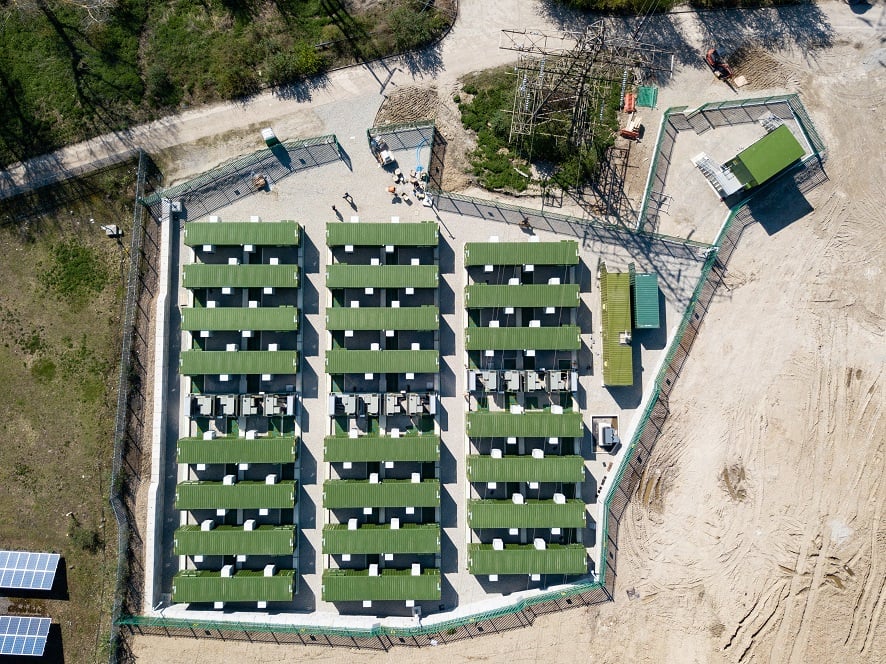
This year will see a shift in focus in the US market beyond the two leading states of California (CAISO) and Texas (ERCOT), BESS owner-operator Zenobē says.
Amit Barnir, the firm’s VP US network infrastructure, was speaking to us ahead of this week’s Energy Storage Summit USA 2025 in Dallas (26/27 March) where he will be speaking on-stage.
Enjoy 12 months of exclusive analysis
- Regular insight and analysis of the industry’s biggest developments
- In-depth interviews with the industry’s leading figures
- Annual digital subscription to the PV Tech Power journal
- Discounts on Solar Media’s portfolio of events, in-person and virtual
Or continue reading this article for free
In this short Q&A, Barnir discusses 2025’s prospects for energy storage deployments in the US, including the deployment challenges, the evolution of financing and what a potential phase-out of tax credits for downstream clean energy projects might mean.
Notably, he said states outside of California and Texas will play a bigger role in the market in 2025. That has been borne out in recent news, with much of it coming from states we report on much less frequently.
The past month alone has seen large-scale BESS projects progress in Colorado and Utah towards construction, utilities in Alabama, Kentucky and Tennessee launch storage procurements, and the Virginia General Assembly vote to increase its state storage targets.
This follows a Q&A with another speaker, optimiser Tyba Energy’s CEO Tom Thunell, published last week.
Energy-Storage.news: What is the outlook for the US energy storage market in 2025?
Amit Barnir: 2025 will be a year where new markets start to develop and the initial focus on CAISO and ERCOT will broaden to see developments throughout the US. Energy storage will be supporting the grids across the US in 2025 and we’re excited to see the energy industry begin to recognise the crucial, strategic role that battery storage can play in a renewable system.
What does the mixture of BESS price falls, supply chain bottlenecks and EPC shortage look like for deploying BESS projects this year?
The fall in BESS pricing makes it that much easier to build a business case, but those supply chain bottlenecks, and EPC shortages mean actually delivering on that will be hard. In times like these, it’s the companies with the strongest relationships, strongest balance sheets and most diversified partners that will be successful.
How is the financing and commercialization of BESS in the US evolving to enable more deployments?
Banks have invested billions of dollars into energy storage at this stage, both domestically and internationally, which means it’s becoming less of a new technology and more of an established asset class.
That means financings will be faster, margins will be better, and more banks will enter the market, especially international ones following strong relationships into the US market. All of that will accelerate BESS deployments for strong developers and IPPs with good track records.
Do you think the 48E ITC and the 45Y PTC are safe, or are you expecting a phase-out as part of the budget reconciliation bill? (A possibility we explored in a Premium article last week.)
That’s a hard one to predict, especially as guidance from the White House is in flux. However, the 48E ITC and 45Y PTC have strong bipartisan support with many red states benefiting greatly from their existence. While an abrupt phase-out is certainly possible, it will more likely be multi-year as we’ve previously seen.
If there is a phase-out, say by end of 2025, do you expect a rush to get projects started before then to still be able to qualify?
You will definitely see a large push for projects that have already secured offtake to get built, but given the magnitude of investment it’s likely that many more projects will simply wait to understand how their specific market will be dealing with the loss of tax credits. Market prices will have to adjust, it’s just a matter of how quickly.

